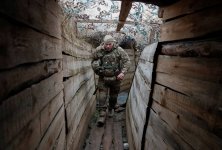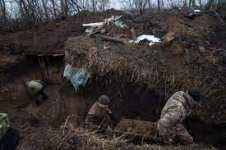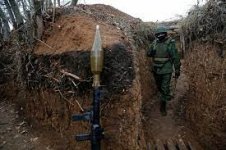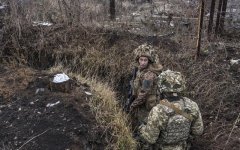The issue though isn't whether they are already force generators, but are they capable of being force employers - in other words being able to form a brigade headquarters, deploy it into combat with various battalions, regiments under command. While SSE doesn't demand that, the brigades do train for that and are equipped and manned for that.
Sorry, I phrased that a little obliquely. What I was trying to get at was completely abandoning the idea of CMBG's as force employers (and indeed as functional HQ's) Leave the Divisions as the geographically based command domestic command org in peacetime, and stand up two new HQ's- 1st Canadian Expeditionary Brigade (Mechanized), 2nd Canadian Expeditionary Brigade (Light). Defeatist approach to get around symmetry, and equipment/ manpower budgetary constraints.
Assuming there's some budget for weapon system /turret changes:
Drop to one LAV battalion per Regiment (free up ~150 LAV's)
~40 to M-SHORAD (12 x 3 + 4 Spares)
~30 to NEMO ( 4 x 6 + 6 Spares)
~60 to RT60 ATGM (2x9+ 4x3 + 4x6 + 6 spares)
~15 to LAV UAV ( 2x6)
Use your reserve reform to stretch the Armoured Regiments into two hybrid battalions of 3 squadrons. 1st battalion is heavy with a 14 tank squadron and two 19 LAV Recce squadrons (mix of LRSS, UAV, and RT 60) + a mortar platoon. 2nd Battalion is light cavalry in TAPV's (ideally some of the flat tops with UAV, some of the RWS's upgraded to RS60 with Javelin).
LAV battalion augmented with a mortar platoon, AT platoon, and two ATGM turrets (with 30mm) per company.
Lean on the reserves to stand up the SHORAD batteries and the support required to mobilize two brigades at the same time
War time mobilization
1 CEB forms around the Armoured Battalion, LAV Battalion, and combat support elements one of the former CMBG's, selects (based on mission and readiness between the remaining 2x Armoured and 2X Lav battalions to round out.
2 CEB does the same with the Light CAV, 2x LIB's, and combat support elements of another, rounds out with either one of the 2 remaining light cav's or LIB's based on mission requirements.










